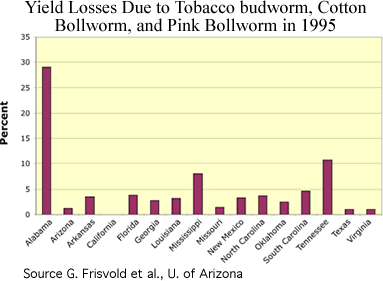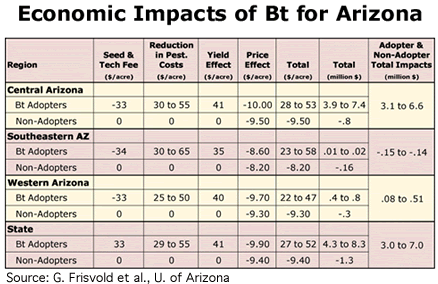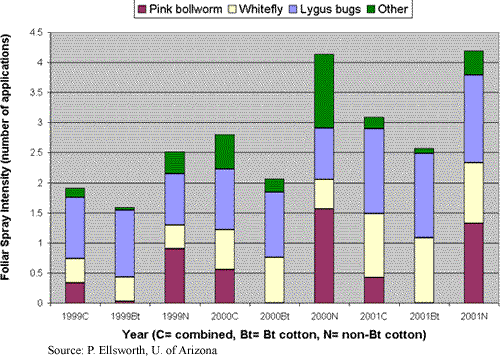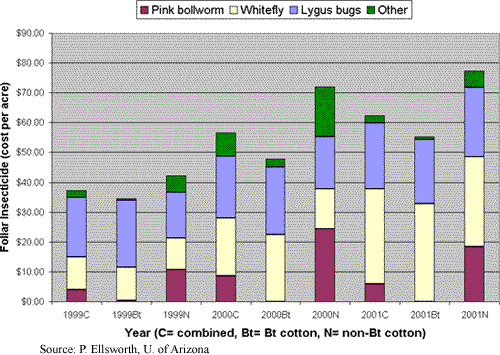 |
||||||||||||
Bt Cotton Data
For cotton growers, there was a lot of pressure from pests before the introduction of Bt cotton in 1996. Due to synthetic pesticide resistance, farmers were losing much of their cotton to tobacco budworms, cotton bollworms, and pink bollworms.

In 1995, attacks from these pests reduced U.S. cotton yields by over 4%, or by over a quarter billion dollars worth of cotton. In some states such as Alabama, budworm damage reduced Alabama yields by 29% despite growers applying the highest applications of insecticide in the US.

Reduction in Pesticide Control Costs:
It is estimated that the average cost reduction in pesticides applied on Bt cotton fields from 1996 to 1998 is between $25 and $65 per acre.
Increased Yield:
Bt cotton planted from 1996 to 1998 is estimated to have yielded 5% more on average than if traditional cotton would have been planted.
Price Effect:
It is estimated that prices are .8¢/lb. lower from increased production due to Bt technology.
Combined, Bt Cotton and Non-Bt
Cotton Comparisons:
(Combined includes both Bt and non Bt acreages)

Decrease in synthetic pesticide use on certain pests.
The use of Bt cotton has decreased the need for foliar spray on pink bollworm drastically.
Overall Bt cotton requires less foliar spray than acres with no Bt cotton and acres with combination of Bt cotton and non Bt cotton.

Decrease in Pest control cost.
Use of Bt cotton has significantly decreased the cost of insecticides in Arizona.
Additional Resources:
Ellsworth, P.C. & J. Jones. 200-. Arizona Cotton Insect Losses. The University of Arizona, Cooperative Extension. Web Publication #AZ1183. Tucson, AZ. URL: http://ag.arizona.edu/crops/cotton/insects/cil/cil.html
"Effects of Bt Cotton Adoption: Regional Differences in Producer Costs and Returns" Final Research Project Report Cotton Incorporated. January 1999 by George Frisvold, Russell Tronstad, Jorgen Mortensen. The University of Arizona, Dept. of Agricultural and Resource Economics.